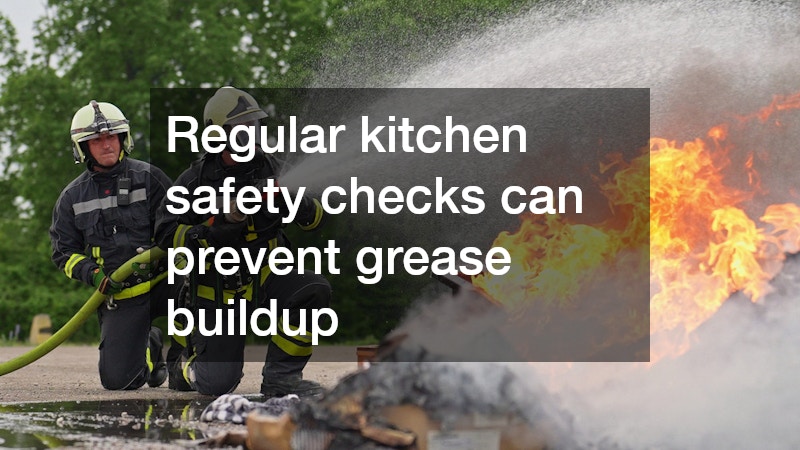This article provides essential fire safety tips brought to you by a trusted local fire protection service. Learn how to safeguard your home, family, and community by understanding and implementing these expert-recommended practices. Fire safety is not just about responding to emergencies; it’s about thoroughly preparing to prevent danger from occurring in the first place.
Maintain Electrical Safety
Regular inspection and maintenance of your home’s electrical systems can prevent many fire hazards. Overloaded outlets and worn-out wiring are common causes of house fires, which is why it’s crucial to address these issues promptly. Using power strips with circuit breakers and replacing damaged cords can also enhance safety.
It is recommended to hire a qualified electrician to regularly check the safety of your wiring and electrical appliances. Upgrading old electrical panels and ensuring that your home meets current safety codes can further mitigate risks. Remember, even seemingly minor electrical issues can evolve into significant fire hazards if left unattended.
Electrical fires caused nearly 45,000 house fires in the U.S. annually in recent years, highlighting the importance of proper maintenance. Having a professional inspection performed at least once a year can provide peace of mind and safety assurance. Furthermore, educating household members about the dangers of overloaded circuits is a simple yet effective preventative measure.
Safe Cooking Practices
Implementing safe cooking practices is another pivotal aspect of home fire prevention. Never leave the kitchen unattended while cooking, as unattended cooking is a leading cause of kitchen fires. Additionally, keeping flammable objects like paper towels, wooden utensils, and fabric away from heat sources is vital.
Utilizing timers can be a helpful reminder to keep you aware of cooking times, minimizing the risk of forgetting something on the stove. In case of a small grease fire, knowing how to cover the flames with a metal lid or using a proper fire extinguisher can prevent escalation. Equipping your kitchen with a fire blanket can also provide quick access to an effective safety tool in emergencies.
Regular kitchen safety checks can prevent grease buildup, which is a combustible source often overlooked by homeowners. Regularly clean your stove and oven, focusing on removing food particles and grease residues. By keeping your cooking environment clean and free of hazards, you will significantly reduce the risk of kitchen fires.
Fireplace and Heater Safety
Fireplaces and heaters require special attention to ensure they are both safe and effective. Ensuring that they are well-ventilated helps prevent dangerous buildup of smoke or gases. Regular cleaning and maintenance will prevent the accumulation of flammable materials in chimneys and heating elements.
Installing a glass screen in front of your fireplace can prevent sparks from escaping and igniting nearby items. Use only seasoned wood for burning, as green or improperly dried wood can increase creosote buildup, which is highly flammable. When using space heaters, keep them positioned at least three feet away from anything combustible.
Never leave a heater or fireplace unattended, especially when leaving the house or going to sleep. Always turn off space heaters and extinguish fireplace flames when retiring from the room. Regularly replace batteries in carbon monoxide detectors to ensure they are functional and able to alert you to any potential hazards.
Smoke Alarms
Smoke alarms are one of the most critical components of home fire safety. Installing smoke alarms on every level of your home, including inside bedrooms and outside sleeping areas, is recommended. Regular monthly testing ensures that they are functioning correctly and ready when needed.
It’s advisable to replace smoke alarms every ten years to guarantee maximum effectiveness and reliability. Consider models with dual-sensing technology, which detect both flaming and smoldering fires for comprehensive coverage. High-decibel alarms ensure that even deep sleepers or individuals with hearing impairments are alerted swiftly.
Statistics show that having a working smoke alarm halves the risk of dying in a residential fire. This significant safety measure can make a crucial difference in an emergency. Educating all household members on the distinct sound of the alarm and what to do if it activates is also vital in ensuring an effective response.
Fire Extinguishers
Fire extinguishers are another essential tool in your fire safety arsenal. It’s important to choose suitable extinguishers for different areas in your home, like kitchens, garages, and workshops, due to the diverse risks involved. Training residents on how to operate extinguishers effectively can make a life-saving difference in an emergency.
Regularly checking the pressure, cleaning the nozzle, and practicing the “PASS” technique—Pull, Aim, Squeeze, and Sweep—ensures readiness and operability. Additionally, installing extinguishers in visible and easily accessible locations will facilitate prompt action during an incident. Consider having at least one on every level of the home for optimal safety.
Research indicates that the proper use of a fire extinguisher can contain or extinguish small fires, preventing them from spreading and causing more extensive damage. This makes having an extinguisher and knowing how to use it crucial to home safety. Checking expiration dates and replacing outdated units regularly should not be overlooked.
Discussing fire safety at family meetings emphasizes the importance of preparedness and encourages open dialogue about potential concerns. Encouraging input and questions from all family members can uncover areas that may need further attention or improvement. A united family approach to fire safety ensures everyone contributes to and benefits from a secure home environment.
By following these fire safety tips from your local fire protection service, you can significantly reduce your risk of experiencing a fire emergency. Stay informed, prepared, and proactive in ensuring the safety of your home and loved ones. Continuous education, regular maintenance, and the right equipment are the keys to a fire-safe environment.

